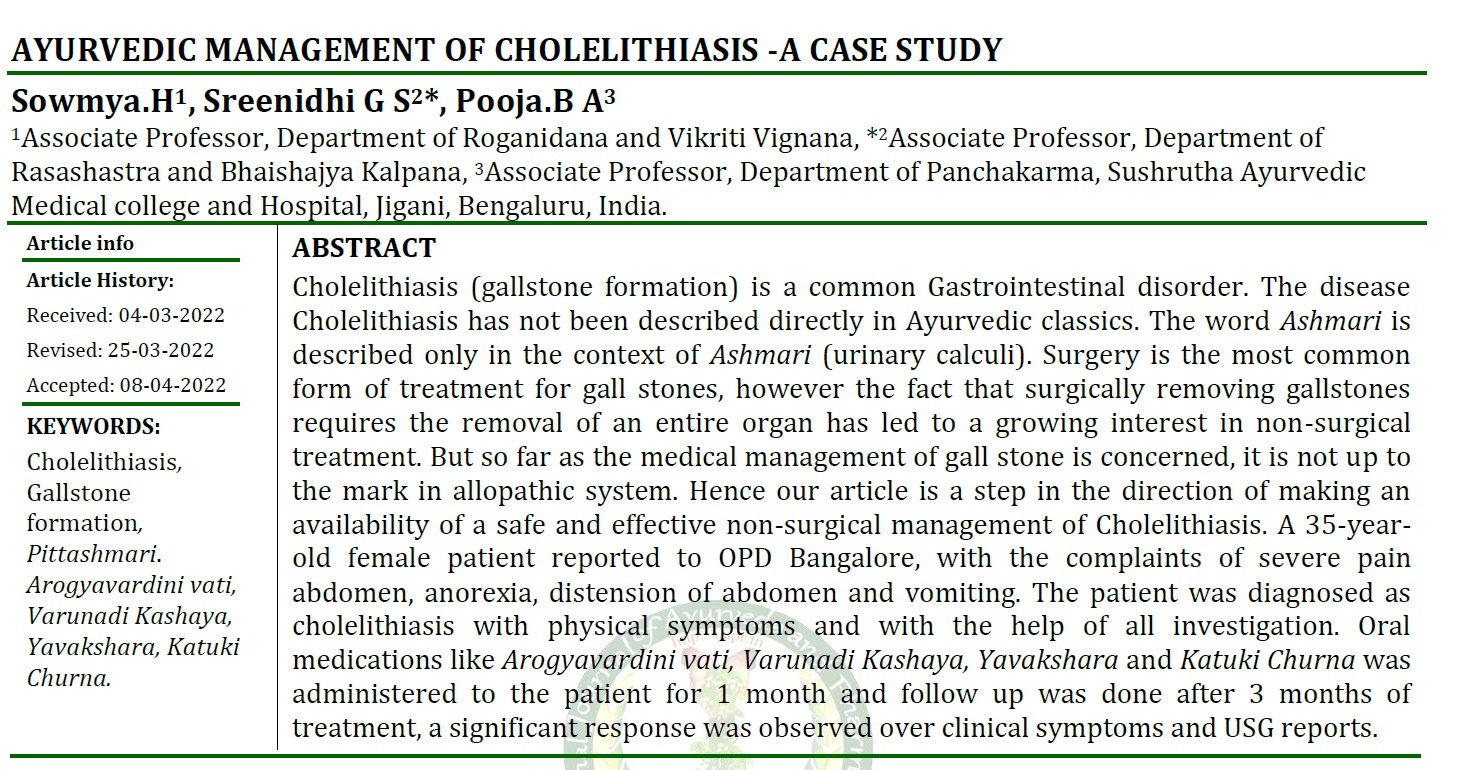Ayurvedic Management of Cholelithiasis - A Case Study
DOI:
https://doi.org/10.47070/ijapr.v10i4.2334Keywords:
Cholelithiasis, Gallstone formation, Pittashmari. Arogyavardini vati, Varunadi Kashaya, Yavakshara, Katuki Churna.Abstract
Cholelithiasis (gallstone formation) is a common Gastrointestinal disorder. The disease Cholelithiasis has not been described directly in Ayurvedic classics. The word Ashmari is described only in the context of Ashmari (urinary calculi). Surgery is the most common form of treatment for gall stones, however the fact that surgically removing gallstones requires the removal of an entire organ has led to a growing interest in non-surgical treatment. But so far as the medical management of gall stone is concerned, it is not up to the mark in allopathic system. Hence our article is a step in the direction of making an availability of a safe and effective non-surgical management of Cholelithiasis. A 35-year-old female patient reported to OPD Bangalore, with the complaints of severe pain abdomen, anorexia, distension of abdomen and vomiting. The patient was diagnosed as cholelithiasis with physical symptoms and with the help of all investigation. Oral medications like Arogyavardini vati, Varunadi Kashaya, Yavakshara and Katuki Churna was administered to the patient for 1 month and follow up was done after 3 months of treatment, a significant response was observed over clinical symptoms and USG reports
Downloads



